
The goal of mopping is to clean and disinfect floors while minimizing labor. Microfiber mops clean and prevent the spread of germs better than cotton mops by holding onto more dirt, dust, germs and liquids. They are lighter than cotton mops and provide more absorbency, enhancing productivity and minimizing injuries. They also are more environmental as they require less chemical and water usage, can be laundered, and last longer, creating less landfill.
Microfiber is comprised of polyester and polyamide (nylon) fiber. It is available in multiple grades. Split blended microfiber, which is what Rubbermaid exclusively uses, creates pie shaped wedges that scrape up and capture dirt best, enhancing microbial removal. Microfiber mops dry in 1/3 the time of cotton mops, inhibiting bacterial growth. These mops are required for LEED certification.
MICROFIBER OPTIONS
Microfiber Dust Mops
Best practice is to dust mop a floor to remove the majority of surface dirt and dust, then damp mop it. Dust mops are 18”-60” wide, are typically green, and are available with fringes which provide 50% more surface area coverage. Looped ends reduce tangling, fraying and deplying.
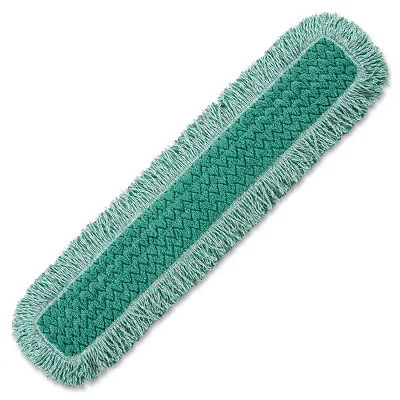
Microfiber Damp Mops
Damp mops, available as traditional style mop heads or as flat mops, are used to clean and disinfect. Flat mops are available in 18-24” width, and some include scrubbing strips to enhance cleaning. Traditional mops with looped ends reduce tangling, fraying and deplying, while tailbands improve floor coverage and improve launderability. Mops with a tube design reduce drag and increase productivity.
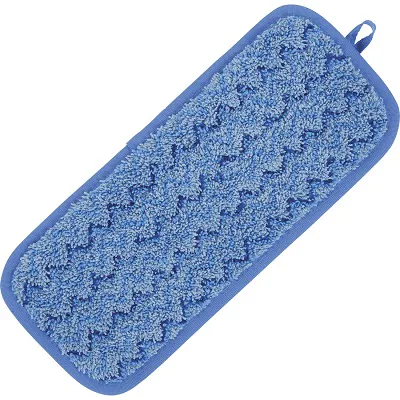
Microfiber Web Foot Mops
Rubbermaid microfiber web foot mops have superior cleaning efficacy, superior absorbency and release characteristics.
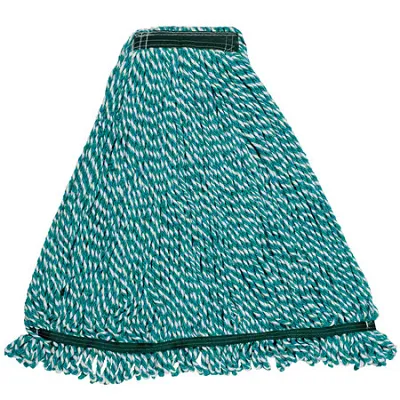
Mop Buckets
Rubbermaid Wavebreak design reduces labor, and reduces splash by 40% helping to reduce slip/fall injuries. Includes a dirty water bucket for isolating dirty water, leading to cleaner floors. Color coding available to reduce cross-contamination.
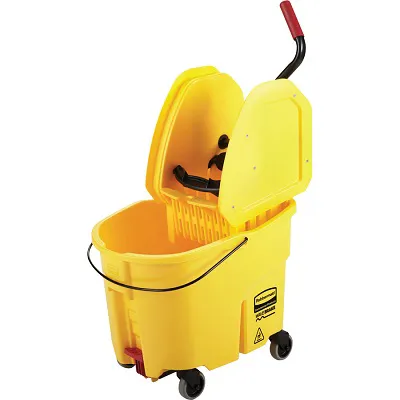
Microfiber Mop Recharging Bucket
Use this bucket to pre-saturate flat 18” wide microfiber damp mop heads with cleaning/disinfecting solution. Holds up to 20 mop heads, providing coverage up to 5000 sq. ft.
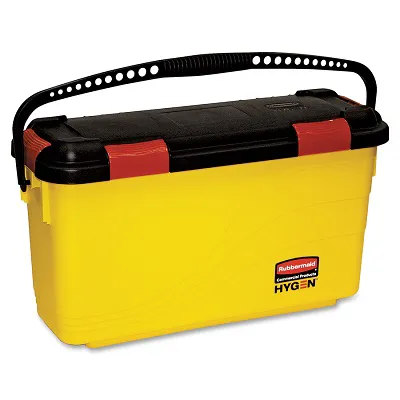
Mop Handles & Frames
Match your mop to the correct frame and handle for maximum productivity.
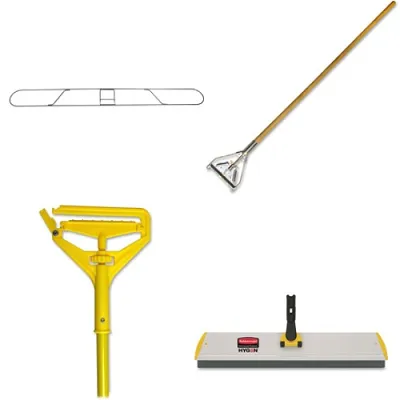
Swiffer Sweeper
Swiffer sweeper mops are lightweight and perfect for smaller floor areas. They accept dry mop refills, wet mop refills, or disinfecting mop refills.
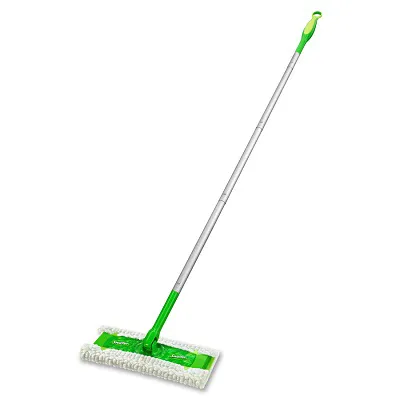
COLOR CODING & CARE
ADVANTAGES OF COLOR CODED MOPS AND CLEANING SYSTEMS
Color coded mop heads, buckets, and microfiber cloths help identify areas in which to use equipment. This helps prevent cross-contamination. For example, red typically identifies equipment used for cleaning high risk restrooms, discouraging the use of red equipment to clean kitchens.
Industry Standard Color-Coding System:
- Red: High-risk areas: Typically, restrooms
- Yellow: Low-risk, specialty areas: Labs, gyms, and low-risk restroom areas like sinks and mirrors
- Blue: All-purpose cleaning: General office
- Green: Food service areas: Kitchens & breakrooms
WET MOP CARE AND MOP STORAGE
Proper care and maintenance of your damp mop can help it last up to five times longer. Plus, the mop will more effectively clean if it’s regularly maintained.
- Clean the mop’s head thoroughly in warm water before mopping to make sure that any leftover chemicals are rinsed out. This will help reduce the risk of cross contamination.
- Don’t twist the mop head when it’s in the mop wringer to prevent the strands from loosening.
- Soak the mop head in hot water for up to 10 minutes after you are finished mopping, and then rinse. This helps keep the mop head clean while preventing cross contamination.
- Never leave a mop in dirty mop water overnight. This can create a breeding ground for bacteria, mold, and mildew, and it may also weaken the mop fibers.
- When storing mops, hang them with the head up after it has dried to prevent mold formation.
- Machine launder applicable mop heads on a regular basis, as this will help prevent them from breaking down. It is not recommended to wash cut end mops, as they are likely to tangle in the wash.




